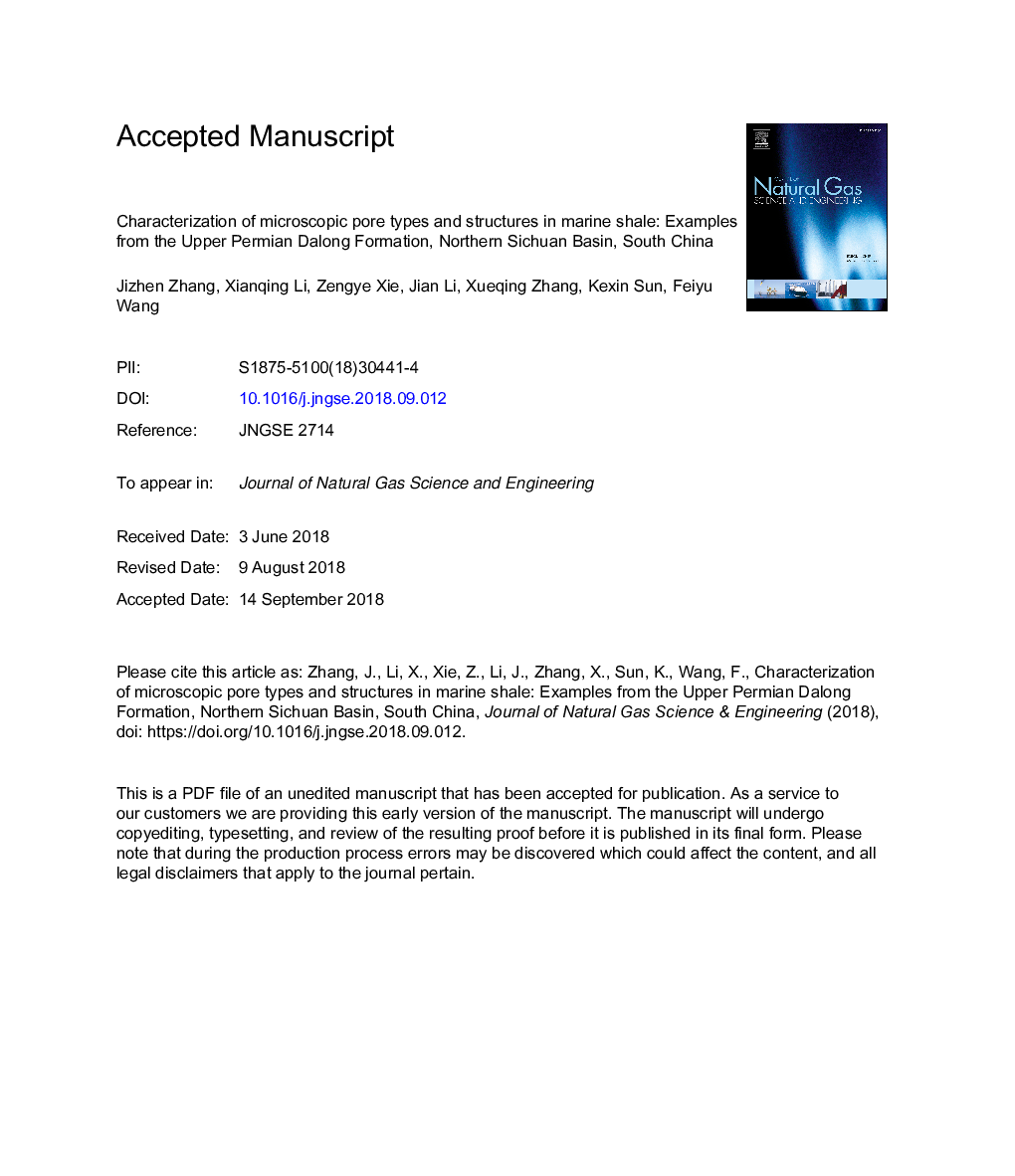| کد مقاله | کد نشریه | سال انتشار | مقاله انگلیسی | نسخه تمام متن |
|---|---|---|---|---|
| 11030987 | 1646107 | 2018 | 51 صفحه PDF | دانلود رایگان |
عنوان انگلیسی مقاله ISI
Characterization of microscopic pore types and structures in marine shale: Examples from the Upper Permian Dalong formation, Northern Sichuan Basin, South China
دانلود مقاله + سفارش ترجمه
دانلود مقاله ISI انگلیسی
رایگان برای ایرانیان
کلمات کلیدی
موضوعات مرتبط
مهندسی و علوم پایه
علوم زمین و سیارات
علوم زمین و سیاره ای (عمومی)
پیش نمایش صفحه اول مقاله

چکیده انگلیسی
We selected the Upper Permian Dalong shale in northern Sichuan Basin to qualitatively and quantitatively characterize the different types and sizes of pore system in marine shale. Field emission scanning electron microscopy, low-pressure N2/CO2 gas adsorption-desorption experiment, high-pressure mercury intrusion porosimetry experiment, and petrophysical model interpretation method were conducted. Results show that Dalong shales are rich in brittle minerals and organic matters (OMs). The pore system consists of four types of pores, namely, OM pores, intraparticle (intraP) pores, interparticle (interP) pores, and microfracture. OM pores and pores within brittle minerals dominate the pore system and account for 65.7% and 24.5% of the total porosity, respectively. Slit- and wedge-shaped pores are the major pore shapes in the shale pore system. These pores have good adsorbability and openness that can facilitate the storage and migration of shale gas. Pore size diameters are mainly distributed in the ranges of 0.40-0.90â¯nm, 200-600â¯nm and 20-80â¯Î¼m. Both the specific surface area (SSA) and total pore volume (PV) decrease with the increasing average pore diameters. Micro- (<2â¯nm), meso- (2-50â¯nm), and macropores (>50â¯nm) contribute 78.23%, 6.18%, and 12.52%, respectively, of the total PV and 92.67%, 9.25%, and 1.15% of the total SSA. The pore diameter of <10â¯nm is predominant in the pore system and account for 86.83% of the total PV and 99.89% of the total SSA. OMs together with clay minerals jointly influence the total PV and SSA development, whereas brittle minerals inhibit pore development. The total organic carbon (TOC), brittle minerals and clay minerals discriminatively control the development of micro-, meso-, and macropores, which are discretely provided by OM pores within kerogen, pores within brittle minerals, and clay minerals, respectively. Fractal dimensions D1 and D2 were 2.153-2.561 and 2.672-2.772, respectively. These values indicate that the pore surface is substantially irregular, and the pore structure is significantly complex and heterogeneous, which is positively correlated with total PV and SSA but negatively correlated with pore size diameter. TOC content, thermal maturity, and clay minerals are positively correlated to fractal dimension; whereas high brittle mineral content may reduce the fractal dimension.
ناشر
Database: Elsevier - ScienceDirect (ساینس دایرکت)
Journal: Journal of Natural Gas Science and Engineering - Volume 59, November 2018, Pages 326-342
Journal: Journal of Natural Gas Science and Engineering - Volume 59, November 2018, Pages 326-342
نویسندگان
Jizhen Zhang, Xianqing Li, Zengye Xie, Jian Li, Xueqing Zhang, Kexin Sun, Feiyu Wang,